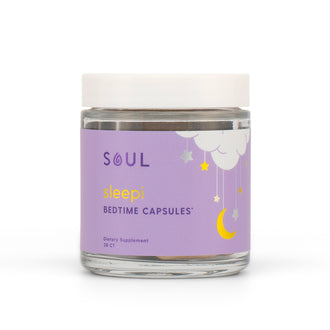Key Takeaways:
- Differences and Similarities: CBD and CBDV are both non-psychoactive cannabinoids found in the cannabis plant, but they differ in their chemical structure and potential therapeutic effects. CBD is well-known for its anti-inflammatory, anti-anxiety, and pain-relieving properties, whereas CBDV is being studied primarily for its effects on neurological disorders such as epilepsy and autism.
- Safety and Side Effects: Both CBD and CBDV are generally considered safe and have been well-tolerated in human studies, with few reported side effects. However, individual responses can vary, and starting with low doses is recommended when incorporating these cannabinoids into your health regimen.
- Legal Considerations and Personal Needs: The choice between CBD and CBDV should be based on individual health needs, legal status in your region, and personal wellness goals. Consultation with a healthcare provider is advised to ensure the best and safest approach to using these cannabinoids. Researching cannabis products may also help you find the perfect match for your needs.
Cannabidiol (CBD) has taken the wellness world by storm, touted for its potential health benefits and lack of psychoactive effects. However, CBD is just one of many cannabinoids found in the cannabis plant. Another, less well-known cannabinoid is Cannabidivarin (CBDV). While both share similarities, understanding the nuances between CBDV and CBD is crucial for anyone looking to harness their therapeutic properties effectively. In this article, we will explore the distinctions and similarities between these two compounds, their potential benefits and side effects, and provide guidance on choosing the right one for your needs. Whether you are a seasoned CBD user or new to the world of cannabinoids, this comparison will equip you with the knowledge to make informed decisions about your wellness journey.
Discover Wellness With SOUL
Elevate Your Well-Being—Explore with SOUL |
Understanding Cannabinoids
Cannabinoids are a class of diverse chemical compounds that act on cannabinoid receptors in cells that alter neurotransmitter release in the brain. They are naturally found in the cannabis plant, and their interaction with the body's endocannabinoid system can influence various physiological processes including appetite, pain sensation, mood, and memory. The most well-known cannabinoids are tetrahydrocannabinol (THC) and cannabidiol (CBD), but there are over a hundred different cannabinoids, each with its unique effects and benefits.
The Role Of Cannabinoids In The Body
The human body produces its own cannabinoids, known as endocannabinoids. These compounds play a crucial role in regulating and maintaining homeostasis, or internal balance, across various systems and functions. When introduced into the body, plant-based cannabinoids, like CBD and CBDV, can interact with the endocannabinoid system similarly to the body's own cannabinoids. They can bind to or influence cannabinoid receptors throughout the body, potentially aiding in the regulation of sleep, mood, immune function, pain response, and more.
The CBD Compound
Cannabidiol, commonly referred to as CBD, is one of the most researched and prevalent cannabinoids found in the cannabis plant. Unlike its counterpart, THC, CBD does not produce a "high" or psychoactive effect. This makes it an appealing option for those looking for relief from inflammation, pain, anxiety, psychosis, seizures, and other conditions without the disconcerting feelings of lethargy or dysphoria. CBD is available in various forms, including oils, tinctures, edibles, capsules, and topical creams, making it accessible and adaptable to different users' needs and preferences.

Discovering CBDV
Cannabidivarin, or CBDV, is a lesser-known cannabinoid also found in the cannabis plant. Much like CBD, CBDV is non-psychoactive, meaning it doesn’t induce the high associated with THC. However, it differs in its chemical structure and, consequently, in some of its potential effects and applications. CBDV is present in lower concentrations in most cannabis strains, particularly those with higher CBD content. It has recently garnered attention from the medical and scientific communities due to its promising therapeutic properties, especially in the areas of neurological disorders.
CBDV Vs. CBD: The Comparison
Effects And Benefits
Both CBDV and CBD interact with the body’s endocannabinoid system, but they do not have identical effects. CBD is widely recognized for its anti-inflammatory, anti-anxiety, and pain-relieving properties. It has been extensively studied and is used to treat a variety of conditions, including anxiety, chronic pain, and insomnia. Beyond neurological and pain-related conditions, CBD is also being explored for its potential effects on anxiety, depression, heart health, and even acne.
On the other hand, CBDV is gaining attention primarily for its potential in neurology, particularly in reducing the frequency and severity of seizures and its potential applications in the treatment of autism and other neurological disorders. Additionally, CBDV is being examined for its potential anti-inflammatory and anti-nausea effects, among other possible therapeutic applications. As research continues, the specific effects and benefits of CBDV and CBD will become clearer, helping to guide their use in clinical and therapeutic settings.
Side Effects And Safety
Both CBD and CBDV are generally considered safe and have been well-tolerated in human studies, with few reported side effects. However, as with any compound, potential side effects exist. CBD users have reported mild side effects such as fatigue, diarrhea, and changes in appetite. CBDV’s side effects have not been as thoroughly studied, but available research indicates a similar profile to CBD, with no significant adverse effects reported at therapeutic doses. Nevertheless, individual responses can vary, and it is essential to start with low doses and consult healthcare professionals when incorporating these cannabinoids into a health regimen.
Legal Status And Availability
The legal status of CBD and CBDV can vary significantly from one region to another and is often influenced by the source of the cannabinoids (hemp vs. marijuana) and local laws regarding cannabis products. In many places, CBD derived from hemp with less than 0.3% THC is legal, but laws surrounding CBDV are less clear due to its lesser prevalence and research.
Choosing Between CBDV And CBD
Factors To Consider
When deciding between CBDV and CBD, several factors should be taken into account. First, consider the specific health condition or symptoms you are aiming to address. While CBD is known for its broad range of potential health benefits, including anti-inflammatory, analgesic, and anxiolytic effects, CBDV may be particularly beneficial for neurological conditions, such as epilepsy. Secondly, consider any personal reactions or sensitivities to cannabinoids. Individual experiences can vary significantly, and what works for one person may not work for another. Finally, legal considerations should not be overlooked. Ensure that the cannabinoid you choose is legal in your area and sourced from a reputable supplier to ensure quality and compliance.
Personal Needs And Goals
Your personal health needs and wellness goals play a crucial role in determining whether CBDV or CBD is the right choice for you. If you are seeking relief from anxiety, stress, or chronic pain, CBD might be more suitable due to its extensive research and proven benefits in these areas. On the other hand, if you are exploring treatment options for conditions like epilepsy, autism, or other neurological disorders, CBDV could offer more targeted benefits. It’s essential to conduct thorough research and potentially consult with a healthcare professional to make an informed decision based on your specific circumstances and health objectives.

Final Thoughts
The choice between CBDV and CBD depends on a variety of factors, including individual health conditions, personal preferences, and legal status. Both cannabinoids offer unique benefits and have the potential to improve quality of life in different ways. As research continues, we are likely to discover even more about these compounds and how they can be used in wellness and medicine. Remember to consult with a healthcare provider before starting any new supplement regimen, and always source your products from reputable suppliers to ensure safety and efficacy. By understanding your own needs and staying informed about the latest research, you can make the best decision for your personal health and well-being.
For those considering CBD as part of their wellness routine, Soul CBD Gummies can be an excellent starting point, offering a convenient and enjoyable way to integrate the benefits of both CBD and CBDV into daily life.
Read also:
- CBDA Vs CBD: Exploring The Differences
- CBD Vs Delta 8: Which Is Right For You?
- CBG Vs. CBD: Breaking Down The Unique Benefits And Differences
Frequently Asked Questions
How do CBD and CBDV differ chemically?
The primary difference is that CBDV has a three-carbon propyl side chain, while CBD has a five-carbon pentyl side chain.
Are CBDV and CBD legal?
Legality varies by location and source; typically, hemp-derived compounds with less than 0.3% THC are legal in many areas.
What are common effects of CBDV?
Similar to CBD, CBDV may reduce pain, anxiety, improve sleep, and provide relaxation without intoxication.
What are common side effects of CBDV?
Possible side effects include dizziness, diarrhea, upset stomach, fatigue, and headaches.
Which strains are high in CBDV?
Strains like Forbidden V, Pine Walker, Royal CBDV, Euphoria, and Painkiller XL are noted for higher CBDV content.
How are CBDV products used?
Like CBD products, CBDV can be consumed as oils, edibles, capsules, and topicals depending on the user's preference.
How do CBDV and CBD affect seizures?
Both CBDV and CBD have shown potential in reducing seizure frequency and severity in various studies.
Is CBDV effective for muscular dystrophy?
Studies suggest CBDV may reduce inflammation and enhance muscle function in Duchenne muscular dystrophy.
Sources:
- Pretzsch, C. M., Voinescu, B., Lythgoe, D., Horder, J., Mendez, M. A., Wichers, R., ... & McAlonan, G. M. (2019). Effects of cannabidivarin (CBDV) on brain excitation and inhibition systems in adults with and without Autism Spectrum Disorder (ASD): a single dose trial during magnetic resonance spectroscopy. Translational psychiatry, 9(1), 313.
- Vigli, D., Cosentino, L., Raggi, C., Laviola, G., Woolley-Roberts, M., & De Filippis, B. (2018). Chronic treatment with the phytocannabinoid Cannabidivarin (CBDV) rescues behavioural alterations and brain atrophy in a mouse model of Rett syndrome. Neuropharmacology, 140, 121-129.
- Rock, E. M., Sticht, M. A., Duncan, M., Stott, C., & Parker, L. A. (2013). Evaluation of the potential of the phytocannabinoids, cannabidivarin (CBDV) and Δ9‐tetrahydrocannabivarin (THCV), to produce CB1 receptor inverse agonism symptoms of nausea in rats. British journal of pharmacology, 170(3), 671-678.
- White, C. M. (2019). A review of human studies assessing cannabidiol's (CBD) therapeutic actions and potential. The Journal of Clinical Pharmacology, 59(7), 923-934.
- Suraev, A. S., Marshall, N. S., Vandrey, R., McCartney, D., Benson, M. J., McGregor, I. S., ... & Hoyos, C. M. (2020). Cannabinoid therapies in the management of sleep disorders: a systematic review of preclinical and clinical studies. Sleep medicine reviews, 53, 101339.




